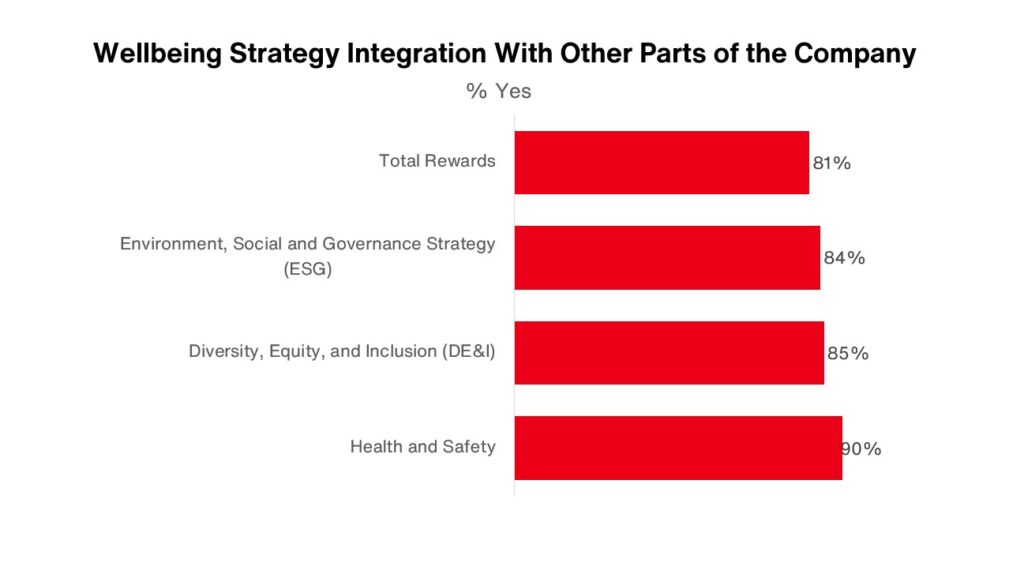Wellbeing strategy, once seen as a luxury, is now a vital part of a company’s overall strategy. Integrating wellbeing into other areas of a company is the next step forward.
Key Takeaways
- Having a wellbeing strategy is important, but only part of the story.
- Most companies have begun to integrate wellbeing with their overall strategy, but there is much more to do.
- Companies are integrating wellbeing with health and safety, total rewards, diversity equity and inclusion (DE&I) and environmental, social and governance (ESG) strategies.
The concept of “wellbeing” has quickly moved to the top of companies’ priority lists. Not too long ago, wellbeing programs were rare, and those that did exist usually consisted of discounted gym memberships or healthier snacks in the vending machine in exchange for a minimal discount on health insurance. Realizing this would not be enough to enable meaningful employee impact, companies looked to develop more than just a program — they needed a strategy.
Wellbeing strategies, especially those that go beyond physical wellbeing, have exploded since the COVID-19 pandemic. In Aon’s 2022-2023 Global Wellbeing Survey, 83 percent of companies say they have a wellbeing strategy in place — a substantial increase of 28 percentage points since 2020.
Continuing this trend, companies are now integrating their wellbeing strategies into their business and human capital programs. Just over 40 percent say their wellbeing strategy is “fully integrated” into the larger company’s strategy. And the majority have begun integrating aspects of their wellbeing initiatives into other parts of their company’s overall strategy, including health and safety, total rewards, diversity, equity and inclusion (DE&I) and environmental, social and governance (ESG) practices.

Source: Aon’s 2022-2023 Global Wellbeing Survey
Wellbeing in Health, Safety and Total Rewards Strategies
Integrating wellbeing into your health and safety strategy seems like an obvious fit. For example, musculoskeletal injuries are a leading cause of work-related injury, absences and a major factor driving medical claims. Among the major contributing factors to work-related injuries are wellbeing issues such as physical inactivity, obesity and stress. Focusing on programs that include proper ergonomics, strength, flexibility and daily activity paired with the right education and support, will continue to link wellbeing, health and safety together for positive business outcomes.
Additionally, an employee’s emotional wellbeing can play a major role in returning an injured worker back to work. Their feelings about the employer can have an impact on the success of a return-to-work plan. Therefore, organizations are also incorporating issues around emotional wellbeing and psychological safety in their workplace safety strategies.
Another area which benefits from a focus on wellbeing is total rewards. According to Aon’s Global Wellbeing survey , more than half of companies incorporate financial wellbeing as a part of their wellbeing strategy. But it’s not just financial wellbeing. Having a robust total rewards plan can also help address financial stress, ultimately improving an employee’s emotional wellbeing.
Wellbeing as Part of a DE&I Strategy
A wellbeing strategy that integrates with diversity, equity and inclusion (DE&I) practices benefits employers and employees on many levels. It allows employees to come to work as their whole selves and considers the differing experiences of various communities and backgrounds. This can be as simple as using inclusive language in wellbeing communications or ensuring that employees have access to culturally competent care. Just over half (54 percent) of companies globally say their DE&I strategy incorporates wellbeing.
Amitabh Deka
Put simply, to integrate DE&I and wellbeing means that your wellbeing strategy adheres to the principles of your DE&I strategy, and your DE&I strategy takes into account wellbeing.”
Head of Wellbeing Solutions, South Asia, Aon
Gender identity, sexual orientation, race/ethnicity, mental health status and family status/living arrangements are the characteristics most frequently addressed by DE&I strategies. It’s not difficult to see how these characteristics interact with wellbeing, especially when considered through the lens of social determinants of health.
Social determinants of health are important to a population’s wellbeing, because where and how a person lives has a big impact on their health. For example, people in lower income, urban and sparsely populated rural areas tend to have less access to healthcare facilities. They also may have limited access to stores that sell fresh healthy foods or fewer opportunities for exercise. With predictive analytics, companies can use various tools to address social determinants of health as part of their wellbeing strategy.
Why does integration matter?
We know that companies that integrate their strategies perform better in a number of ways. But why does it work? Part of the answer is intuitive. There are natural synergies that exist in these strategies. For example, a company that participates in a retirement strategy like a pooled employer plan can bolster the governance aspect of its ESG plan while also improving their employees’ financial wellbeing. Similarly, companies with better wellbeing outcomes tend to have more support from senior leaders. Integrating wellbeing with other areas of company strategy can help leaders gain that support.
Wellbeing as Part of an ESG Strategy
In in Aon’s Global Wellbeing survey, about half of companies globally say their ESG strategy affects wellbeing. Here are some ways we are seeing each component of ESG interact with wellbeing:
- Social aspects of ESG are an intuitive fit for wellbeing. How a company treats its employees is the core of the “S” in ESG — and wellbeing is an obvious part of that. Nearly two-thirds of companies claim that social aspects of ESG are impacted by wellbeing.
- Environmental aspects of strategy are also an easy connection. For instance, a company’s goals to lower its emissions can have a direct impact on the wellbeing of their employees. There is also emerging evidence that changes in climate correlate with increased prevalence of mental health issues1.
- Governance is significantly less well represented in our survey. Only about 40 percent of companies say that governance is impacted by wellbeing. At first, this may seem like a stretch. However, support of wellbeing initiatives by senior leadership and the C-Suite is the glue holding these initiatives together.
How Wellbeing Can Help Build a Sustainable Working Life
Just like an individual participating in a wellbeing program — be it an exercise routine, a retirement savings plan or meditation program — a company’s wellbeing strategy works better with commitment. Companies that emphasize wellbeing are more likely to integrate it into their overall company strategy and, in the process, create a more sustainable working life for their people.
A sustainable working life is directly correlated to these three pillars:
- Resilience – the ability to weather change
- Agility – the ability to adapt to changing circumstances and conditions
- Belonging- the feeling of connection and support in a working environment
The journey from healthy snacks and gym memberships to a sustainable working life has not been a straight line. But as companies strive to retain and maintain talent, wellbeing should be more than just disparate programs. Wellbeing needs to be part of an organization’s overall strategy, and a part of its DNA.
You might also like:












